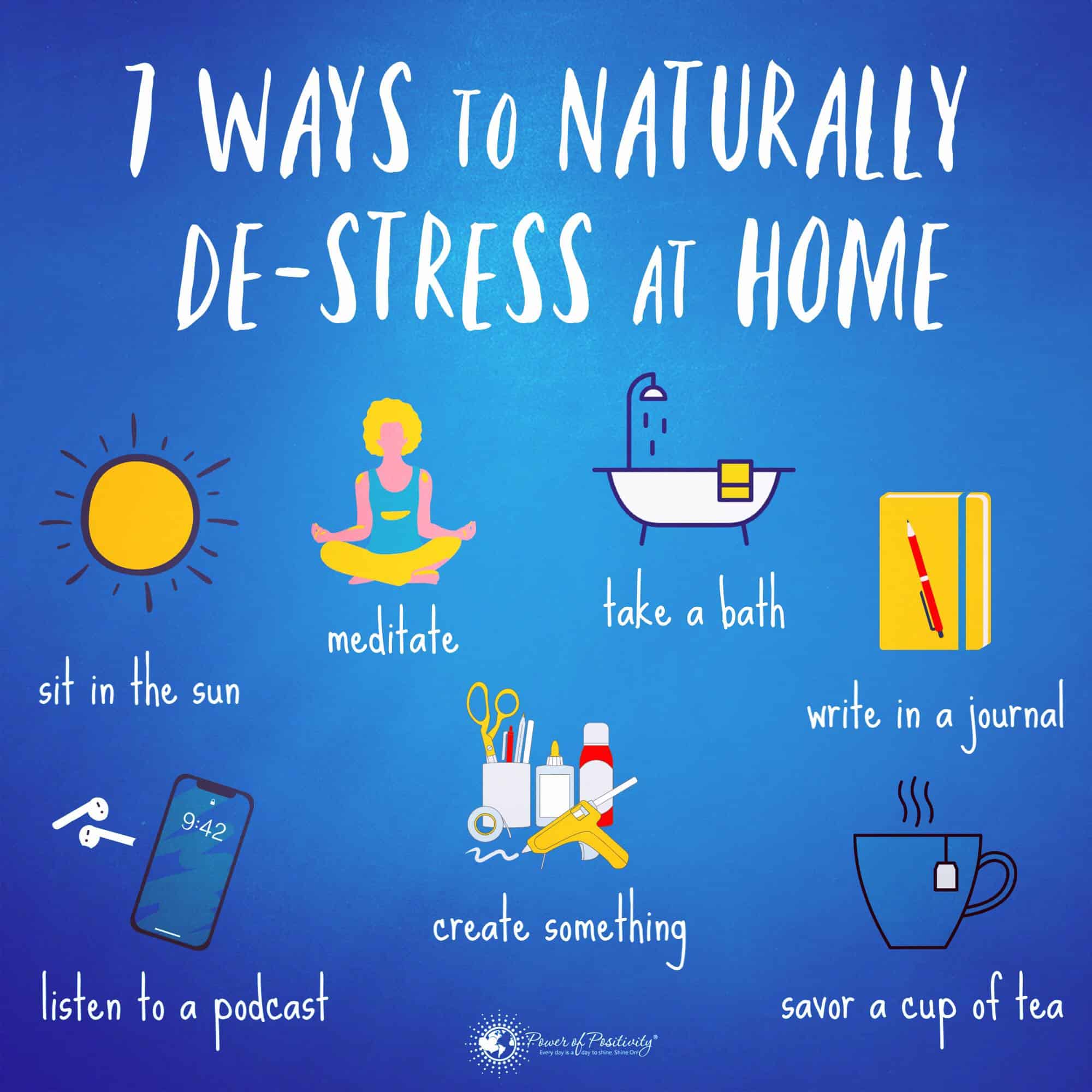The people who need relaxation techniques have the least time to use them! It can be challenging for those constantly hurrying about their daily lives to find a moment to stop and breathe.
But without getting that much-needed time for self-care, your health and wellbeing can suffer. Thankfully, there are a few simple practices you can squeeze into your schedule! Here are three science-proved relaxation techniques every busy person needs to try.
1. Guided Imagery
Guided imagery is a valuable mechanism that can calm the body through a mix of meditation and focused relaxation. It’s among the most straightforward relaxation techniques, but it can be challenging to learn. Practitioners typically follow recorded instructions or a live instructor to guide the images they seek to create. Adept practitioners can do that on their own!
Guided imagery is also known as katathym-imaginative psychotherapy or guided affective imagery. It involves generating various mental images to recreate sensory perceptions of different input types. This may include smells, sounds, tastes, sights, and movements. It can also have multiple experiences and imaginative ideas that defy the typical “sensory” response concept.
When performing this practice, you start to imagine pleasant sensations and experiences. This can be a great reprieve in a time of stress, providing a quick way to bring your mind back to clarity. Guided imagery has been proven to achieve the following outcomes:

· Reduce Symptoms Of Depression
Depression and similar mood disorders often involve several negative mental images. As such, relaxation techniques that provide positive images can reduce those symptoms. Studies have found that guided imagery can even help those who are depressed due to disease and physical issues.
· Reduce Stress And Anxiety
Guided imagery is among the best relaxation techniques for managing anxiety and stress. That’s why it’s so good for busy people! Studies have found that a daily practice can have long-lasting effects on stress levels, even before anxiety-inducing events.
· Reduce Pain
Did you know that high-stress levels worsen the experienced severity of how you perceive pain? That works in reverse, as well! Research indicates that guided imagery can even decrease pain symptoms among chronic illnesses.
· Improve Sleep
If you’ve ever tossed and turned trying to fall asleep at night, then you know 100% that stress and anxiety can wreak havoc on one’s ability to sleep and rest! Studies have found that guided imagery, which is a form of mindfulness, can help to boost sleep quality. You’ll be able to fall asleep faster and enjoy better sleep!
So, how can you perform guided imagery? It’s easiest to follow a video, audio, or live guide while you’re still learning the technique. But if you’re going to try it yourself, here are some steps to take!
· Step 1: Get Comfortable
To engage in imagined sensory input, you need to make sure current sensory information isn’t so overwhelming that it distracts you. Use a relaxed position, such as the one you may have used before for other forms of meditation. Lying or sitting down in a quiet, comfortable location is ideal.
· Step 2: Relax Your Breathing
Close your eyes and inhale deeply with your diaphragm. Imagine yourself inhaling calm and exhaling all your stress from the day. Pay attention to how your body moves as you inhale and exhale, such as how your shoulders fall and rise or your stomach contracts and expands. You will maintain this breathing style for the rest of the practice.
· Step 3: Imagine The Scene Of Your Choice
Now that you’re fully relaxed bring your mind’s creativity forward and imagine a peaceful, happy scene. You can go to your happy place or bring up a peaceful memory, for example, or you could imagine a new place from scratch. What matters is that it relaxes you!
· Step 4: Sense The Scene’s Details
It’s time to engage your sensory perception. Imagine all the things you’d feel, smell, taste, see, and hear within the scene in your mind. For example, you may imagine a babbling brook or the scent of baking bread. Immerse yourself into this world.
· Step 5: Enjoy!
Perform your guided imagery for a minimum of 15 minutes or for as long as you’d like. Continue your deep breathing and your sensory engagement. When you’re ready to leave your make-believe world, count backward from ten before opening your eyes.
2. Progressive Muscle Relaxation
Progressive muscle relaxation is among the most straightforward science-proved deep relaxation techniques you can try on your own! It’s a non-pharmacological method that is based on regulating the bodies’ physical response to tension and stress. It involves an awareness of that tension in different muscle groups in the body and learning more about your anxiety as you go.
Simply put, you focus on tensing and relaxing different muscle groups one by one! It might surprise you that this is one of the best relaxation techniques since it sounds straightforward. But science has shown that progressive muscle relaxation can help you reap the following benefits:
· Balance Systolic Blood Pressure
You probably already know that stress can raise blood pressure. Worse still, high blood pressure can lead to several health issues down the line! Luckily, research indicates that progressive muscle relaxation is one of the effective relaxation techniques to reduce those levels.
· Reduce Tension, Stress, And Anxiety
If your mental health suffers from your busy schedule, studies show that progressive muscle relaxation reduces disorderly symptoms. You’ll feel calmer, happier, and less stressed out.
· Reduce Pain
Muscle relaxation techniques are great for managing pain. If you deal with various chronic or constant pain issues, this can be a quick way to help reduce a few symptoms. Studies show this is beneficial for neck pain and other research reveals benefits for lower back pain!
· Improve Sleep
It’s interesting just how much sleep and stress are linked! Progressive muscle relaxation has been found in studies to benefit sleep, improving its quality and speed. This will boost your mood, positivity, and energy.
· Decrease Migraine Frequency
Anyone who’s ever had a migraine knows just how painful and terrible they are. If you have them often, you may have noticed that they can get triggered by stress. Progressive muscle relaxation is one of the relaxation techniques that reduces their frequencies, says research.
So, how can you perform guided imagery? It’s entirely up to you the order with which you act. It would help if you got comfortable, then progressively focused on different muscles from one end of your body to the next. You tense a group of muscles, relax them, and move on to the next. The muscle groups to do this with individually, from head to toe, are:
- Raise brow to tense, lower to release.
- Close tightly to tense, relax to release.
- Purse to tense, part to release.
- Open wide to tense, close gently to release.
- Clench to tense, then release.
- Neck and Shoulders. Raise shoulders to your ears to tense, lower to release.
- Tighten your chest as you inhale to tense, then release.
- Tense your arm muscles to tense, then release.
- Abdominal muscles. Contract to tense, then expand with exhale to release.
- Clench your hands into fists to tense, then release.
- Squeeze to tense, then release.
- Squeeze to tense, then release.
- Move them towards each other to tense, then move them back to release.
- Tense your calf muscles to tense, then release.
- Increase tension to tense, then release.
- Lift toes upwards to tense, then release. Repeat by holding toes down to tense again, then release.
You can choose to start at your forehead or at your toes, as long as you move in an orderly fashion from one end to the other. Here are some tips for performing the technique!

· Relax
Get into a comfortable lying or sitting position, close your eyes, and get calm. It’s best to do this in a quiet room where you won’t be disturbed or distracted. To help get into the zone, try inhaling and exhaling deeply about five times, feeling yourself sink further into calm with each breath.
· Hold and Release
Tense each muscle group for about five to fifteen seconds as you inhale. Then, release the tension by relaxing your muscles with your exhale for twenty to thirty seconds. Don’t worry if you run out of breath; continue a natural breathing pace if needed. Note the differences in your muscle tension when you’re stressing and relaxing them. As you make these observations, continue to breathe in and out deeply.
· Imagine
The mind is a powerful thing! Don’t discount the ability for you to imagine the relaxation. Try to imagine muscle tension leaving your body as you release each group.
· Observe
Please pay attention to how different your muscles feel when tensing versus relaxing them. This will allow you to gain more awareness of your physical symptoms of stress throughout your busy days.
3. Qigong
Qigong is an ancient healing practice from China. It’s a form of meditation that mixes gentle movement and breathing control to produce numerous benefits. Since its creation, it has become more widespread, with people across the globe developing an interest in the practice. This is one of the best relaxation techniques for those who have limited energy to spend due to their busyness!
There isn’t a lot of research into qigong’s effectiveness as of yet. But some studies have found that the practice can:
· Reduce Anxiety And Stress
The multiple different elements of qigong all contribute to its benefits as a relaxation technique. It has gentle movements, regulates breathing, and utilizes meditation. So, of course, it’s going to rid you of some stress! Research shows that weekly or daily practice of qigong can help you better manage everyday anxieties and tension.
· Increase Focus
Busy people need to be able to focus! If they struggle with this, then their stress levels will go through the roof, making it harder to focus again. Research suggests that regular practice of qigong can boost concentration. This is because it involves regulating your body and mind, giving you better mastery over it.
· Improve Balance
The gentle movements of qigong involve a lot of control. Research shows that this is beneficial to physical balancing ability. This can reduce the risk of injuries and falls, so if you’re prone to clumsiness, practicing qigong can give you that side benefit.
There are two kinds of qigong. One is a passive form, which is not dissimilar to guided meditation and imagery techniques. The second is its more popular active form, which is more traditional. Regardless of which one you’re interested in, it’s a good idea to follow a teacher or instructional video on the technique closely. You’ll have to devote a little time to learn from a professional, but the payoff is worth it for busy folks!
Final Thoughts On Some Relaxation Techniques Busy People Need To Try
In our busy world, we must not forget the importance of taking some time to slow down and relax. Try one of these three suggested science-proved relaxation techniques, and you’ll notice a massive difference in your daily life!
The post 3 Science-Proven Relaxation Techniques Every Busy Person Needs to Try appeared first on Power of Positivity: Positive Thinking & Attitude.





